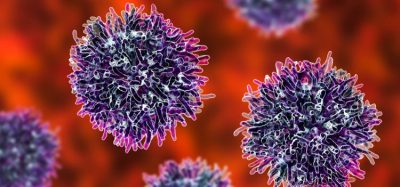Reelin identified as key marker of cocaine-activated brain cells
Posted: 17 June 2025 | Drug Target Review | No comments yet
Researchers at the University of Alabama have identified reelin, a glycoprotein known for its role in brain development, as a key regulator of neurons in the brain’s reward centre, potentially making way for targeted therapies against cocaine use.


Cocaine activates only 10 to 20 percent of neurons in the brain’s nucleus accumbens – a hub of motivation and reward. Though this is a relatively small subset of cells, their activation has outsized effects. These neurons drive addiction-related behaviours through downstream changes in gene expression, synaptic function, neural circuitry, and overall brain activity.
In a study published in Science Advances, researchers at the University of Alabama at Birmingham (UAB), led by Kasey Brida and Dr Jeremy Day, identified the secreted glycoprotein reelin as a marker of specific nucleus accumbens neurons activated by cocaine. Reelin is typically associated with brain development and adult synaptic function, making its presence in addiction-sensitive neurons a surprising discovery.
“Together, these results identify reelin as a stable marker of cocaine-sensitive neurons and reveal a key role for reelin in the transcriptional, electrophysiological and behavioural properties of cocaine-induced striatal plasticity,” said Brida, a graduate student in Day’s UAB Department of Neurobiology lab.
CRISPR interference enlightens reelin’s function
To determine whether reelin is simply a marker or also a driver of drug-related changes, the researchers used CRISPR interference to suppress reelin expression in rats’ nucleus accumbens neurons. The genetic knockdown led to several key findings:
- Decreased gene expression normally associated with cocaine activation
- Altered expression of ion channels that control neuronal excitability
- Impaired excitability in the affected neurons
- Elimination of cocaine-induced behavioural changes in movement and preference
- Reduced cocaine self-administration by the rats.
These changes suggest that reelin is not only a marker, but also a key regulator of how neurons respond to cocaine exposure.
Linking reelin to medium spiny neurons and addiction pathways
Previous studies have shown that cocaine primarily affects medium spiny neurons, the dominant neuron type in the nucleus accumbens – which respond to dopamine signalling. By analysing single-nucleus RNA sequencing datasets from cocaine-exposed brains, Brida and colleagues discovered that more than 80 percent of activated medium spiny neurons expressed reelin mRNA. On average, reelin expression was 10 times higher in these neurons compared to those not activated by cocaine.
The team confirmed that reelin was enriched in a specific subpopulation of medium spiny neurons – both in rats and humans – linking this glycoprotein to addiction-related neural circuits across species.
A new target for treating cocaine addiction
With the CRISPR-based reelin knockdown, the researchers were able to directly observe how the absence of reelin affected both the electrical properties of medium spiny neurons and the behavioural responses to cocaine. The evidence strongly suggests that reelin is necessary for enabling neurons to become excitable and to engage in the molecular signalling pathways that underlie cocaine addiction.
“These findings highlight an opportunity for high-precision manipulation of reward circuitry using reelin-based tools, reveal the necessity of reelin in the cellular response to cocaine and implicate the reelin signalling pathway as a potential therapeutic target for cocaine use disorder,” Brida explained.
Reelin: a surprising discovery with far-reaching implications
Reelin is a well-established player in mammalian brain development during embryogenesis and continues to support synaptic plasticity and function in the adult brain. It has also been associated with a range of neuropsychiatric conditions. However, Brida and Day note that the discovery of reelin mRNA being enriched in the medium spiny neurons activated by cocaine came as a surprise. By targeting the reelin signalling pathway, researchers may one day develop more precise and effective treatments for cocaine use disorder.
Related topics
Central Nervous System (CNS), CRISPR, Drug Targets, Ion Channels, Neurosciences, Translational Science
Related conditions
Cocaine addiction, Drug addiction
Related organisations
The University of Alabama at Birmingham








